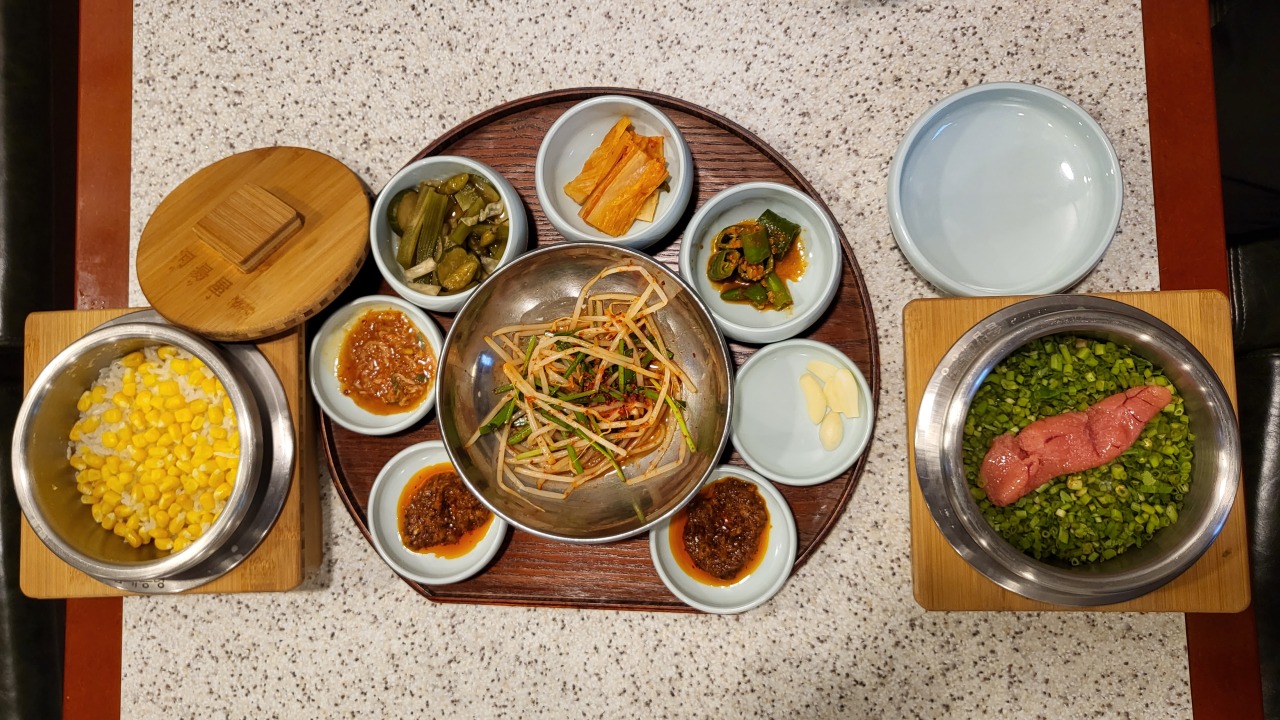
Minari Myeongnan Sotbap and Chodangoksusu Sotbap by Hayangok (Kim Hae-yeon/ The Korea Herald)
Sotbap, various ingredients topped on rice and cooked in its own pot -- usually made of stone, metal or stainless steel -- is a hearty meal beloved by Koreans throughout the distinctive seasons.
Although sotbap can be enjoyed by itself, the meal has its origins in the traditional gamasot -- a large and heavy pot used for heating and cooking rice or soup -- which dates back to the Goguryeo era.
The longstanding custom of serving rice cooked in a giant gamasot, with an amount enough to be shared by the family and neighborhood, has been transformed into a delicate form of a small pot of sotbap for a single serving.
There are no set rules as to which ingredients can go on a sotbap as desirable toppings, which makes it a convenient meal for those who prefer a variety of options.
However, the time it takes to make the dish should equally be valued regardless of the toppings, since the rice takes at least 40 minutes to be cooked inside the bowl for optimal taste.
“It’s rare to enjoy the process of cooking rice today, when a button on an electric rice cooker does it all for you,” Park Han-sol, a food stylist and author of the recently published cooking essay collection, “An Ordinary Day’s Dining Table,” told The Korea Herald. “But I truly enjoy each step to making my own sotbap, from soaking the rice in water, picking the seasonal ingredients that go on the sotbap, and constantly checking to make that the heat is just right while on the pot.”
In the “Gosari (fiddlehead ferns) Sotbap” chapter of Park’s book, she emphasizes how the naturally grown seasonal ingredients, freshly picked from the mountains and fields, become the best choices for a delightful and unique sotbap.
“Sotbap lovers can never leave out the finale of the meal, the nurungji,” she writes. Nurungi, the nutty and fragrant crispy rice left at the bottom of the sot, can be enjoyed by pouring hot water into the bowl, which makes for a humble dessert known to help with digestion.
“From preparing and making to eating, sotbap teaches us the virtue of time and patience that we also try not to lose in our ordinary lives.”
For those who want to try out sotbap specialty restaurants within Seoul, here are three recommended spots in the city.
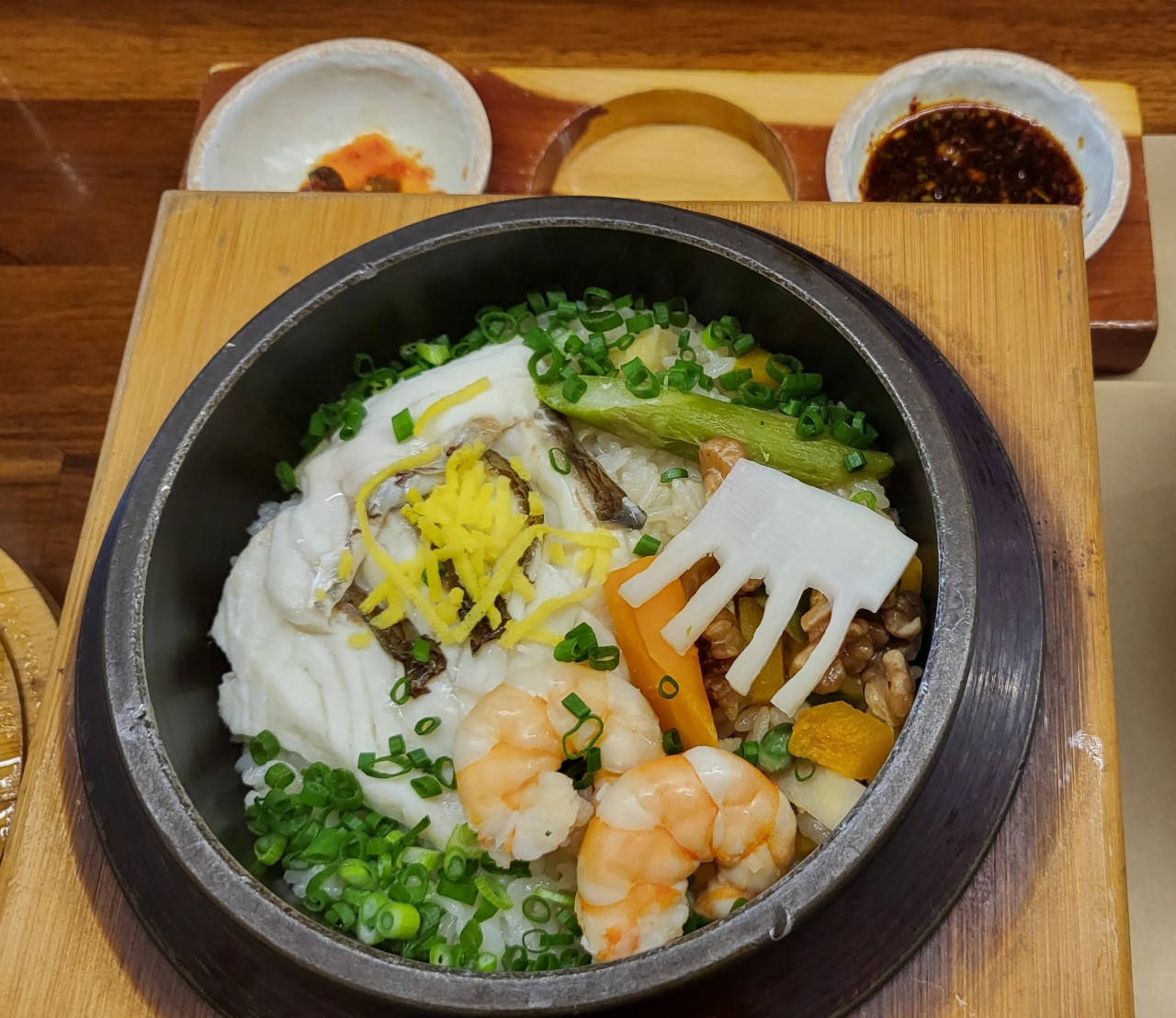
Dokkokji’s Domi Sotbap (Kim Hae-yeon/ The Korea Herald)
Dokkokji, located across the street from Sogang University in Mapo-gu, is easily noticeable by its visitors waiting in long lines outside, especially on weekends.
Entering the restaurant, the interior greets guests with a tranquil tone of black and white, which brings up the image of white rice in a dolsot.
Its signature menu is the Domi Sotbap, rice topped with red snapper, shrimp and some steamed vegetables including carrots, sweet pumpkin, bamboo shoots, chives and asparagus.
First, scoop two-thirds of the rice and all the toppings into a separate bowl that is provided.
Pour water into the sot to enjoy nurungi after finishing the main bowl.
Dip some domi into the chef-made soy sauce before topping it on a spoonful of rice. The domi‘s firm texture also goes well with small sheets of gim, dried seaweed, wrapped around it.
Domi Sotbap costs 25,000 won. A piece of abalone can be added for an additional 3,000 won.
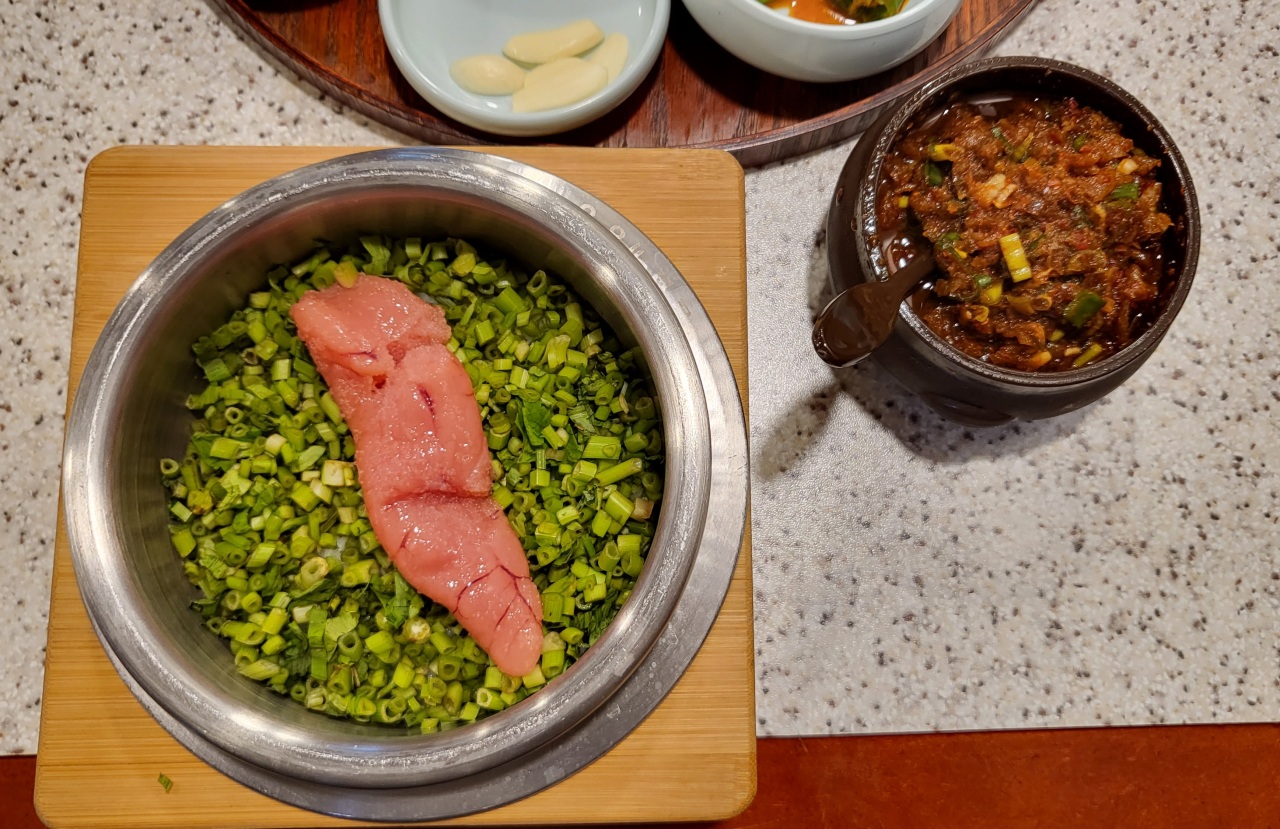
Hayangok’s Minari Myeongnan Sotbap (Kim Hae-yeon/ The Korea Herald)
Hayangok, a sotbap specialty restaurant, is a minute away from Magok Station Exit No. 4.
It serves six different kinds of sotbap -- Baekmi (white rice), Chodangoksusu (sweet corn), Songhwa beoseot (mushrooms), Honghap (mussels), Minari Myeongnan (salted pollack roe) and Sambaechaegul (triploid oysters).
For Minari Myeongnan Sotbap, a piece of butter is provided alongside to mix with the pollack roe to balance out the fishy smell.
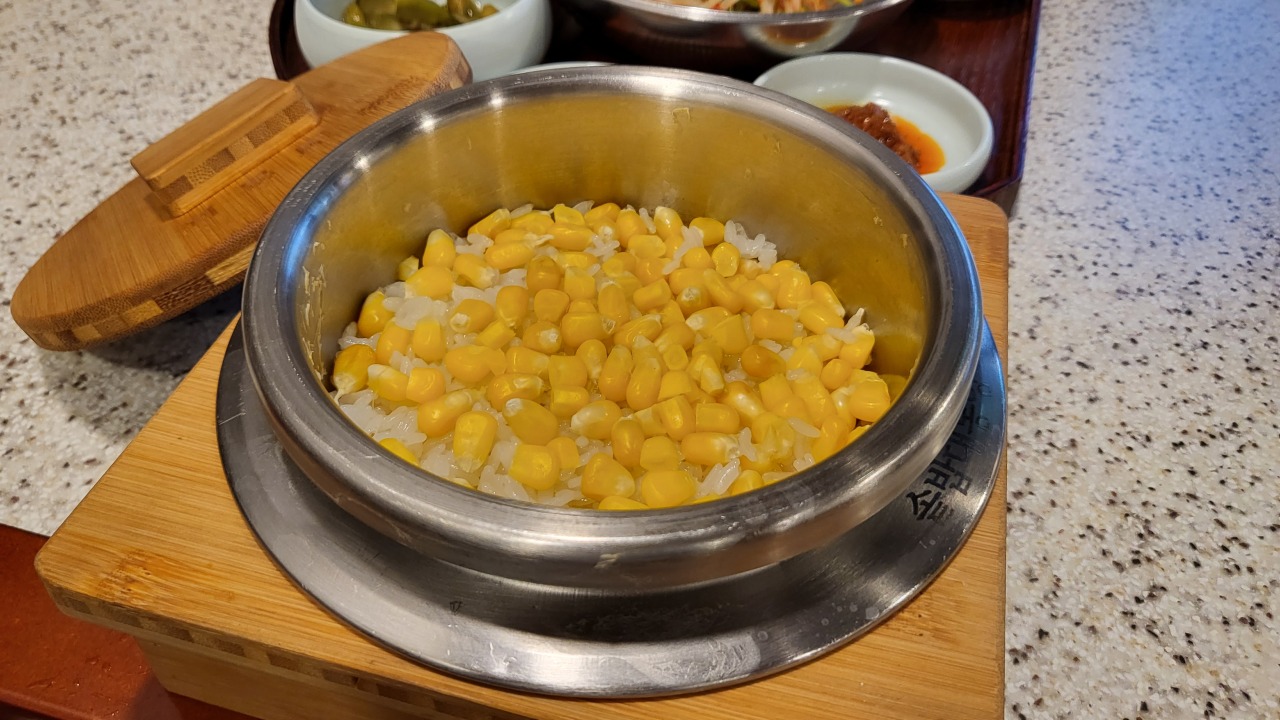
Hayangok’s Chodangoksusu Sotbap (Kim Hae-yeon/ The Korea Herald)
The sweet Chodangoksusu Sotbap can be enjoyed with the pickled bean sprouts, chopped cucumbers and chili peppers which are served as side dishes. The similar but distinctive texture of the corn and rice when mixed together creates a harmonious flavor.
When you visit Hayangok during lunch hour, a complimentary bowl of doenjangjjigae, hot soybean paste stew with braised beef, will be served using sottukkeong, a cooking pot’s lid. The staff‘s cooking performance on a sottukkeong is also fun to watch. The Minari Myeongnan Sotbap is priced at 14,000 won for lunch.
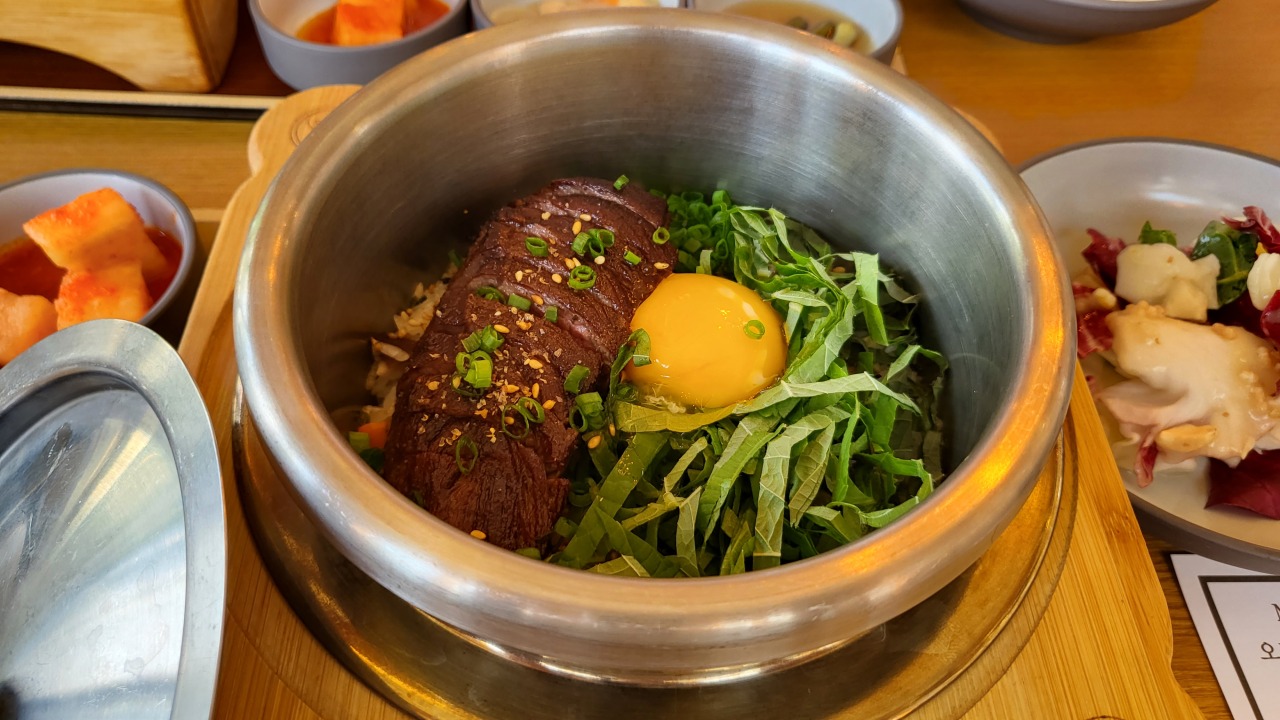
Babeuro’s Steak Sotbap (Kim Hae-yeon/ The Korea Herald)
Babeuro is located on the ground floor of an eight-story building located 600 meters from Mapo Station Exit No. 4. The owner of the restaurant also manages a book cafe named Chaegeuro, located on the top floor of the same building. The cafe has a magnificent view overlooking the Han River. Menu items at the cafe are available for a discounted price upon showing receipts from Babeuro.
Unlike the two sotbap locations mentioned above, Babeuro‘s top recommendation is the meat-based Steak Sotbap.
The Steak Sotbap is covered with ripped sesame leaves gently laid to one side, and around eleven pieces of medium-cooked flat iron steak on the other, topped with an egg yolk at the center.
In a separate bowl, scoop all ingredients and rice, then slowly stir the yolk while pouring on some spice seasoning as you like.
A small dish of pajeon, vegetable pancake, can be enjoyed alongside the steak bowl for 5,900 won. The Steak Sotbap at Babeuro is priced at 20,900 won.










